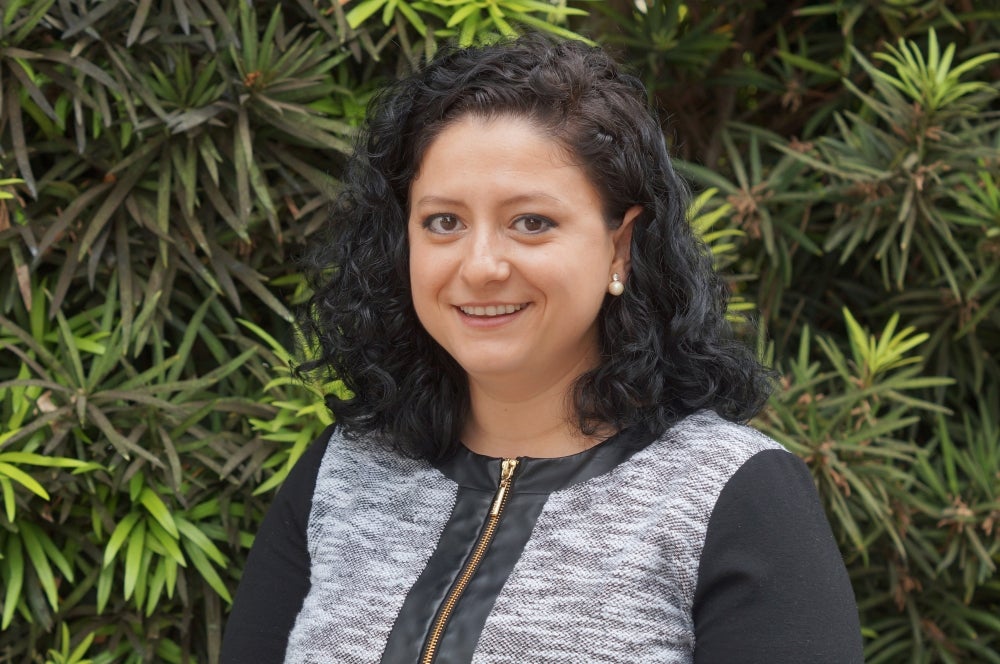
Filling a Gap
As a child, Anisa Myzaferi often spent days accompanying her grandfather, an electrical engineer, on job-site inspections and watching him “pore over old-school blueprints of electrical circuits.” And then she’d go home to her engineer parents — father, civil, and mother, hydrotechnic.
To say that Myzaferi was born to be an engineer, then, is no big stretch. From an early age, she was hard-wired to embrace the de facto family profession. And oh, how she has.
On June 12, Myzaferi will pick up her Ph.D. in electrical engineering from UC Santa Barbara. Soon after she’ll depart for a postdoctoral stint in Malaysia with the not-for-profit entity CREST (Collaborative Research in Engineering, Science & Technology), which unites industry, academia and government in electrical and electronics research, development and design. UCSB is collaborating with CREST on an effort to advance Malaysia’s LED sector.
It’s the next destination in Myzaferi’s educational journey, which first began in Europe. Born and mostly raised in Albania, as a teenager she relocated to Chicago with her parents, who wanted her to have access to U.S. universities. When it came time for college, she stayed close, earning both undergraduate and master’s degrees from Northwestern University.
“When I looked for another place for my Ph.D., UCSB won out on all fronts — from the facilities on campus to the professors I get to work with,” Myzaferi said recently. “And the beach, of course. I really wanted to leave Chicago. It was freezing.”
She warmed quickly to the interdisciplinary culture at UCSB, where she eventually landed in the research group led by Steven DenBaars at the Solid State Lighting & Energy Electronics Center. It’s been her academic home ever since, fostering her growth from student to full-fledged scientist. Her doctoral work, in layman’s terms, centered on the “use of materials science and electrical engineering to design high-power, high-efficiency blue III-nitride laser diodes.”
“I feel very fortunate for my time here, and working with Steve DenBaars has been amazing,” Myzaferi said. “I felt this implicit trust that I would find my way as long as I produced results, and he left me to come into my own. That’s an ongoing process but it’s nice to not be tethered, to have someone just say, ‘Go do it.’ I really appreciate that he trusts students that way, and I’m forever grateful.
“My time at UCSB has been pretty rewarding,” she added. “I love how collaborative the professors are here. Students as well. There is no ‘us versus them,’ no hiding your project from the lab next door. I’m very grateful for that atmosphere. That’s been the biggest takeaway for me from UCSB — the collaborative spirit.”
Asked about the ever-growing push to get females, from ever-younger ages, interested in science and engineering, Myzaferi argued the imperative to first flip the script and “change the language of the conversation.”
“I think the current language is wrong — I don’t want to be called a ‘woman engineer,’” she said. “I’m an engineer. I’m a scientist. I happen to be a woman. To really drive change forward we’re going to have to do away with this distinction. It’s a limiting factor that puts women on a defensive track from the get-go, in my opinion. If I could help change something it would be to change the language of the conversation, because the conversation is going to be there for a while.”
What won’t be around long — at least not in Santa Barbara — is Myzaferi herself. Next stop, Malaysia, for that postdoc position. After that? She’s got her eyes on industry, where she hopes to make her mark by employing her engineering skills to help the general public better connect to the science that impacts their lives.
“I want to be a liaison between the end user and the lab,” she said. “I’m a people person, and I’m pretty good at science, so I feel like I can help fill in that gap. I’m interested in avenues, in bringing different aspects of a project together. I’m a big picture person like that. Life in general is interdisciplinary, with so many aspects and facets to everything. I need that in my career too. That’s why I’m here.”



